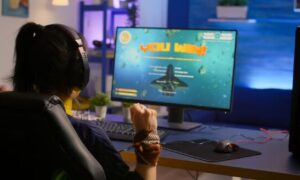Imagine you’re out at sea, feeling the cool ocean breeze and listening to the gentle waves. It’s a magical experience, but it takes some serious skill to sail the seas using just a compass and the stars. This skill is called seamanship, and it’s something not everyone knows. In this article, we’ll learn how to read maps, plan safe routes, and use tools like compasses and GPS to guide us.
Understanding Maps:
Marine navigation starts with understanding nautical charts and maps. These maps give us info about water depth, underwater obstacles, and other important stuff. Learning the symbols, scales, contour lines, and depth numbers on these maps helps us understand where we’re going.
Planning a Route:
Before we set sail, we need to plan our route to stay safe. We use maps, compasses, and GPS to figure out which way to go, where to stop, and how to avoid problems like tides and currents.
Using a Compass:
Compasses are like ancient GPS devices for sailors. Knowing the cardinal points (like north, south, east, and west) and the differences between magnetic north and true north helps us sail in the right direction. We also need to adjust for any magnetic weirdness on our boat to be accurate.
GPS Technology:
While old methods are great, GPS technology has made sailing safer. GPS tells us exactly where we are on Earth with super accuracy. It helps us plan routes, track our position, and find help in emergencies.
Tides and Currents:
Understanding tides and currents is crucial, especially near the coast. Tides are the regular rising and falling of seawater due to gravity from the moon and sun. Currents happen because of tides, wind, and other things. By checking tide tables and current charts, we can plan our trips better.
Staying Safe:
Safety is essential while boating. Things like rocks, reefs, and shallow water can be dangerous. We use buoys, beacons, lighthouses, and radar to stay on track and avoid problems. We also need to know the rules of the sea when sailing in busy areas.
Electronic Tools:
Apart from GPS, we have electronic gadgets to help us navigate. Sonar measures water depth and finds underwater stuff. Radar helps us spot things and other boats even in bad weather or darkness.
Celestial Navigation:
In the past, sailors used the stars, sun, moon, and planets to figure out where they were. It’s not used as much now, but it’s still interesting. To do it, you need to understand how celestial bodies move and use special tools like sextants.
In Conclusion:
Marine navigation is vast and always changing, but some things stay the same. To become a great sailor, you should learn how to read maps, plan routes, deal with tides and currents, use gadgets well, and follow safety rules. If you’re feeling adventurous, you can also explore the old ways of celestial navigation.
By mastering these skills and using them wisely, you’ll have precise, safe journeys on the open water. And you’ll truly appreciate the beauty of the sea.



































